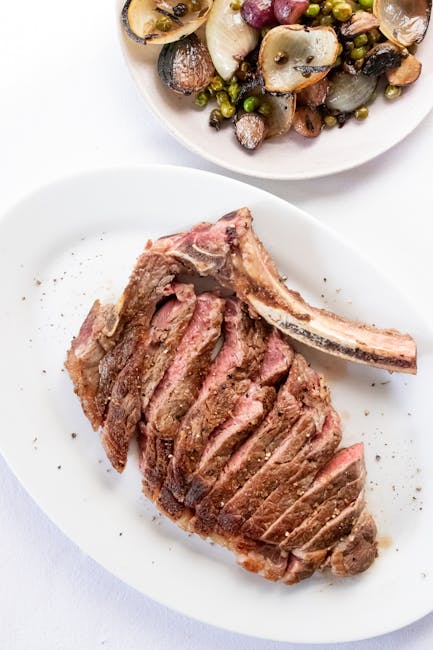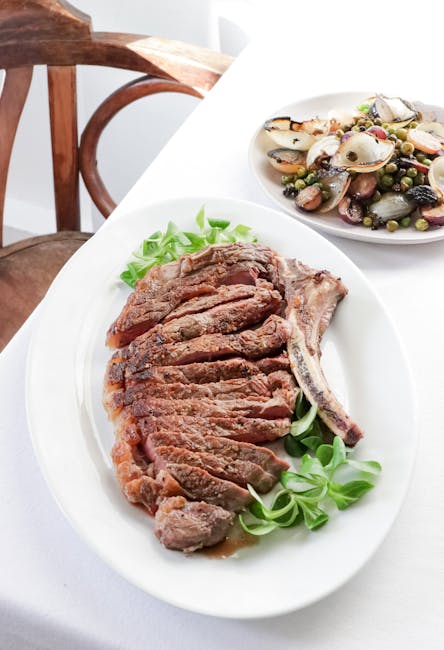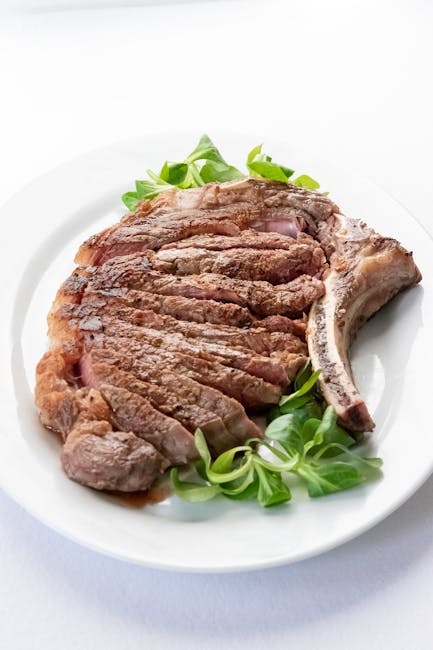Mastering the Medium Rare Steak: Temperature, Techniques, and Troubleshooting
The perfect medium-rare steak: a culinary dream for many, a frustrating challenge for others. Achieving that exquisite balance of tender, juicy meat with a warm, slightly pink center requires understanding more than just the desired doneness. This comprehensive guide delves into the science and art of cooking a medium-rare steak, covering everything from selecting the right cut to troubleshooting common problems.
Understanding Medium Rare Steak Temperature
Before we jump into cooking techniques, let’s establish a clear understanding of what constitutes a medium-rare steak. The internal temperature is the key indicator. Using a reliable meat thermometer is crucial for consistency. A medium-rare steak typically registers between 130°F (54°C) and 135°F (57°C).
It’s important to note that the temperature will continue to rise slightly after removing the steak from the heat, a phenomenon known as carryover cooking. This rise can be anywhere from 5°F to 10°F (3°C to 6°C), depending on the thickness of the steak and its surrounding environment. Therefore, aiming for the lower end of the range (130°F/54°C) is often recommended to account for this carryover.
Factors Affecting Internal Temperature
- Steak Thickness: Thicker steaks take longer to cook and will experience more carryover cooking.
- Starting Temperature: A cold steak from the refrigerator will take longer to cook than one that’s been brought to room temperature.
- Cooking Method: Different cooking methods (pan-searing, grilling, broiling) yield varying results in terms of both internal temperature and browning.
- Ambient Temperature: Cooking in a hot, humid environment can affect cooking times and carryover cooking.
Techniques for Achieving Perfect Medium Rare
Several cooking methods can produce a delicious medium-rare steak. Here’s a breakdown of popular techniques and tips for success:
Pan-Searing
Pan-searing is a fantastic method for achieving a beautiful sear and perfectly cooked interior. Season the steak generously with salt and pepper. Heat a heavy-bottomed skillet over high heat with a high smoke point oil (like canola or grapeseed oil). Sear the steak for 2-3 minutes per side to develop a flavorful crust. Reduce heat to medium, and continue cooking, using a meat thermometer to monitor the internal temperature. Rest the steak for at least 5-10 minutes before slicing.

Grilling
Grilling offers a smoky flavor that enhances the steak’s taste. Preheat your grill to high heat. Season the steak as described above. Grill the steak for 2-3 minutes per side to create a good sear. Then, reduce the heat to medium and continue grilling, monitoring the internal temperature with a meat thermometer. Rest the steak before slicing.
Broiling
Broiling is a quick method ideal for thinner steaks. Preheat your broiler. Place the seasoned steak on a broiler pan and broil for a few minutes per side, keeping a close eye to prevent burning. Use a meat thermometer to check the internal temperature and adjust cooking time as needed. Remember to rest the steak after broiling.
Reverse Searing
Reverse searing involves cooking the steak at a low temperature until it’s almost fully cooked, then searing it at high heat to create a crust. This method ensures even cooking and a perfect sear. Start by cooking the steak in a low oven (around 250°F/121°C) until it reaches an internal temperature about 20°F (11°C) below your target temperature. Then, sear the steak in a hot pan or on a grill to create the desired crust.

Choosing the Right Cut
The cut of steak significantly impacts the final result. Some cuts are naturally more tender and better suited for medium-rare cooking:
- Ribeye: Known for its rich marbling and flavorful taste.
- New York Strip: Leaner than ribeye, but still tender and flavorful.
- Filet Mignon: The most tender cut, but can be less flavorful.
- Sirloin: A more affordable option, but requires careful cooking to avoid toughness.
Troubleshooting Common Problems
Even with careful planning, challenges can arise. Here are solutions for common issues:
Overcooked Steak
If your steak is overcooked, there’s not much you can do to reverse it. However, you can minimize the impact by slicing it thinly and serving it with a flavorful sauce to mask any dryness.
Undercooked Steak
If your steak is undercooked, simply return it to the heat source and continue cooking until it reaches the desired internal temperature. Use a meat thermometer to ensure accuracy.
Unevenly Cooked Steak
Uneven cooking is often due to inconsistent heat distribution. Ensure your heat source is even, and rotate the steak frequently to promote even cooking. Using a meat thermometer at various points on the steak can help ensure even doneness.
Tough Steak
Toughness often results from using a less tender cut of meat or overcooking. Choosing a more tender cut and using a meat thermometer to ensure the steak is not overcooked can help.
Resting is Key
Allowing your steak to rest is crucial for achieving optimal tenderness and juiciness. During resting, the muscle fibers relax, and the juices redistribute throughout the meat. Resting for at least 5-10 minutes, depending on the thickness of the steak, is highly recommended.

Conclusion
Cooking the perfect medium-rare steak is a skill that improves with practice. By understanding the factors that influence internal temperature, mastering various cooking techniques, and paying close attention to detail, you can consistently achieve delicious, tender, and juicy results. Don’t be afraid to experiment and find the methods and cuts that best suit your preferences.
